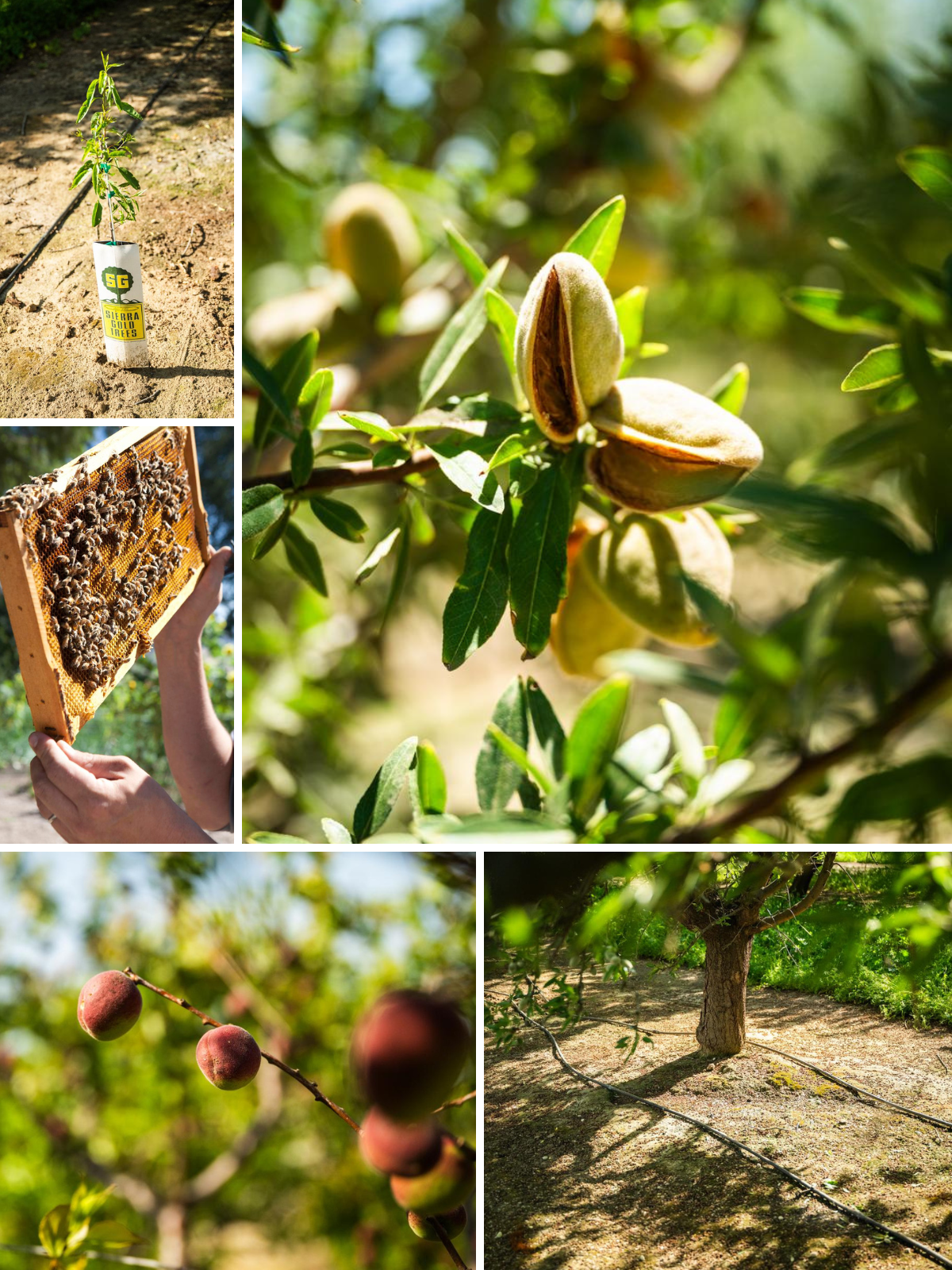California Almonds: From Seed to Snack – How They Grow + Thrive
If you’ve ever crunched on a California almond, drizzled almond milk over your cereal, or even used almond oil for cooking or skincare, you’re enjoying the result of a complex and fascinating process. California is home to 80% of the world’s almond production. Acres upon acres of almond orchards sprawl across the state’s Central Valley. Almonds might be everywhere in our diet, but how much do we know about where they come from? Let’s explore almonds from bloom to harvest to understand how they grow in the Golden State.
Is an Almond a Nut or a Seed?
To set the stage, let’s start with a surprising fact: almonds aren’t actually nuts. Botanically, almonds are seeds. Specifically, they’re the seed of the almond fruit, which is a type of drupe—a fleshy fruit with a single hard seed inside, similar to a peach or cherry. In fact, the almond tree, Prunus dulcis, is related to these other stone fruits. Almonds develop within a green, leathery hull that splits open as it matures, revealing the shell and the seed inside. That seed is what we call the almond.
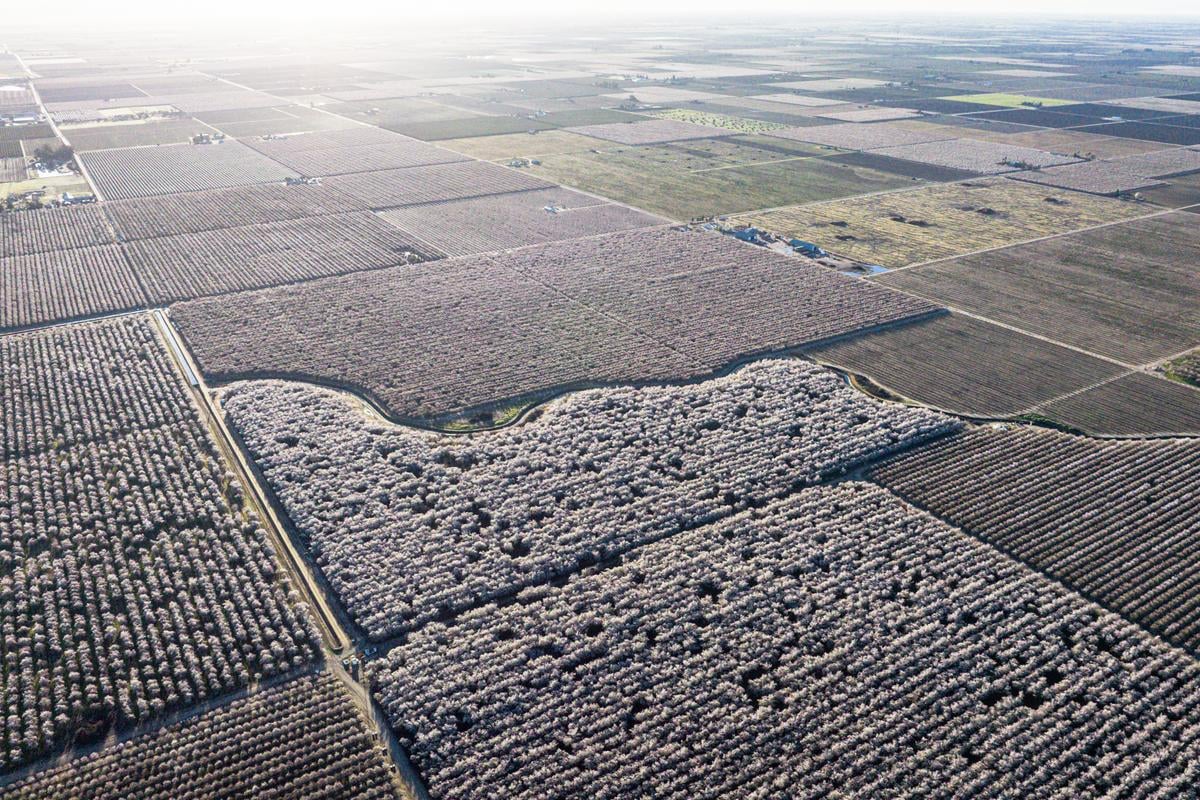
How and Where California Almonds Grow
The magic of California almonds begins in the fertile lands of the Central Valley, which has an ideal Mediterranean climate. With hot, dry summers and mild, wet winters, almond trees here thrive in the full sun, rich soil, and proper irrigation. These conditions make the Central Valley one of the most suitable places on Earth for these trees to flourish. Almonds do grow in other areas of the state, but the preponderance of almond production takes place in the valley.
An almond tree takes a few years to mature but can bear fruit for decades with proper care such as modern irrigation practices that lead to more efficient water use. While mature trees may produce almonds every year, the path from planting to harvest is a long one. It requires patience and consistent nurturing.
How Long Before a California Almond Tree Grows and Bears Almonds?
After planting, it typically takes three to four years for an almond tree to begin producing almonds. However, they won’t reach their peak yield until around year seven or eight. With good care, an almond tree can continue to produce almonds for up to 25 years or more, although the first few years are the most productive.
The Role of Bees: Tiny Pollinators with a Big Job
One of the most vital parts of the almond growth process is pollination, and this is where bees come in. Almond trees rely heavily on bees to move pollen from one flower to another. This cross-pollination is essential for almond production since almond trees aren’t self-pollinating—they need pollen from a different variety of almond tree to set fruit.
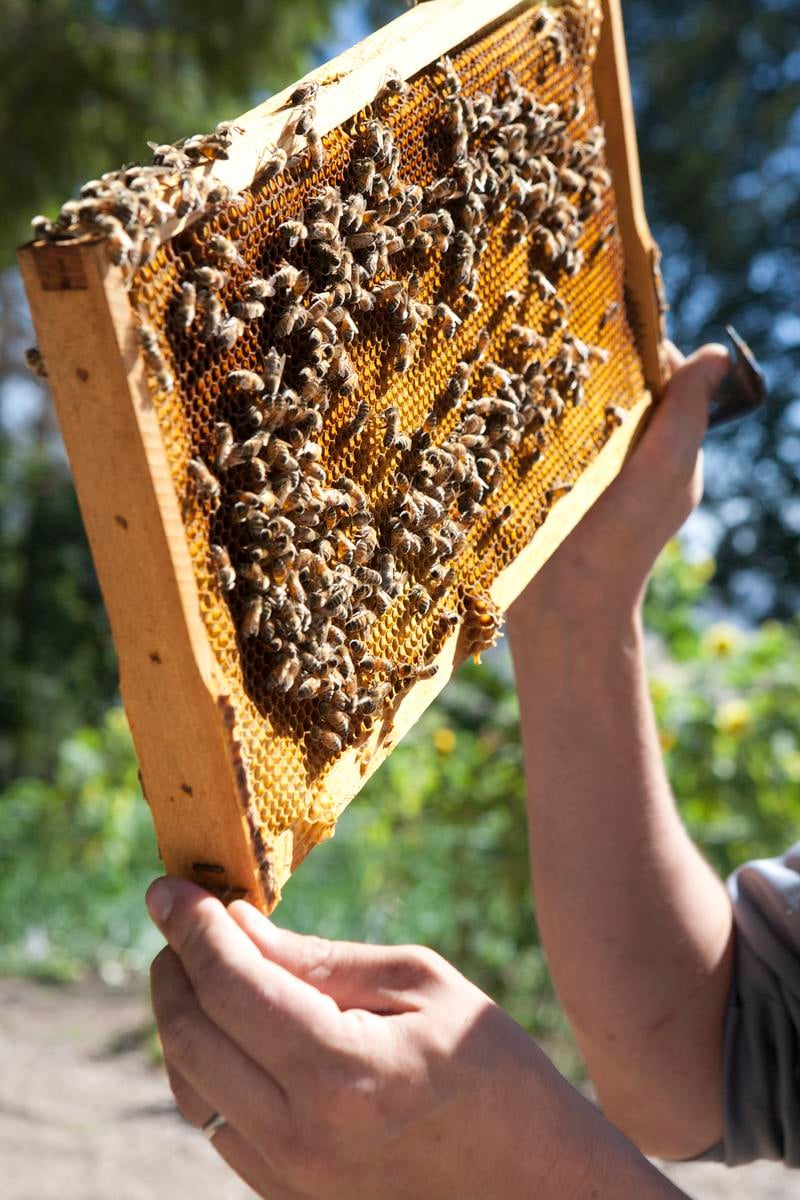
California’s almond bloom, occurring from late February to early March, is one of the world’s largest pollination events. Each year, about two-thirds of the nation’s honeybee colonies are brought to California’s almond orchards to assist with pollination. Without bees, the almond industry wouldn’t be nearly as successful, and crop yields would be severely diminished. The partnership between bees and almond trees has driven innovation in beekeeping and pollination practices, focusing on bee health and sustainability. Moreover, almond blossoms provide honeybees with their first natural food source of the year, offering pollen that contains all ten essential amino acids required in their diet. This nutritious start supports the health and strength of bee colonies, enabling beekeepers to split hives after the almond bloom, thereby expanding their apiaries.
When Do Almond Trees Produce Nuts?
Almond trees go through a specific growth cycle. After the bees do their work in spring, the blossoms give way to small almond fruits. During summer, these fruits develop inside their hulls and ripen under the hot California sun. By late summer to early fall, the hulls split open, signaling that the almonds are ready to harvest. This growth cycle is unique to almond trees in regions with similar climates, as they need a combination of warm temperatures and specific seasonal changes to complete their cycle.
How California Almonds Are Grown and Harvested
Growing almonds takes year-round care, but the harvest itself is an exciting process. In late summer, farmers bring in special machinery called “shakers” that shake each tree, causing the mature almonds to fall onto the ground. Afterward, crews leave the almonds to dry for a week or two in the orchard under the sun. This helps reduce moisture content, preserving the quality of the almonds and preventing mold.
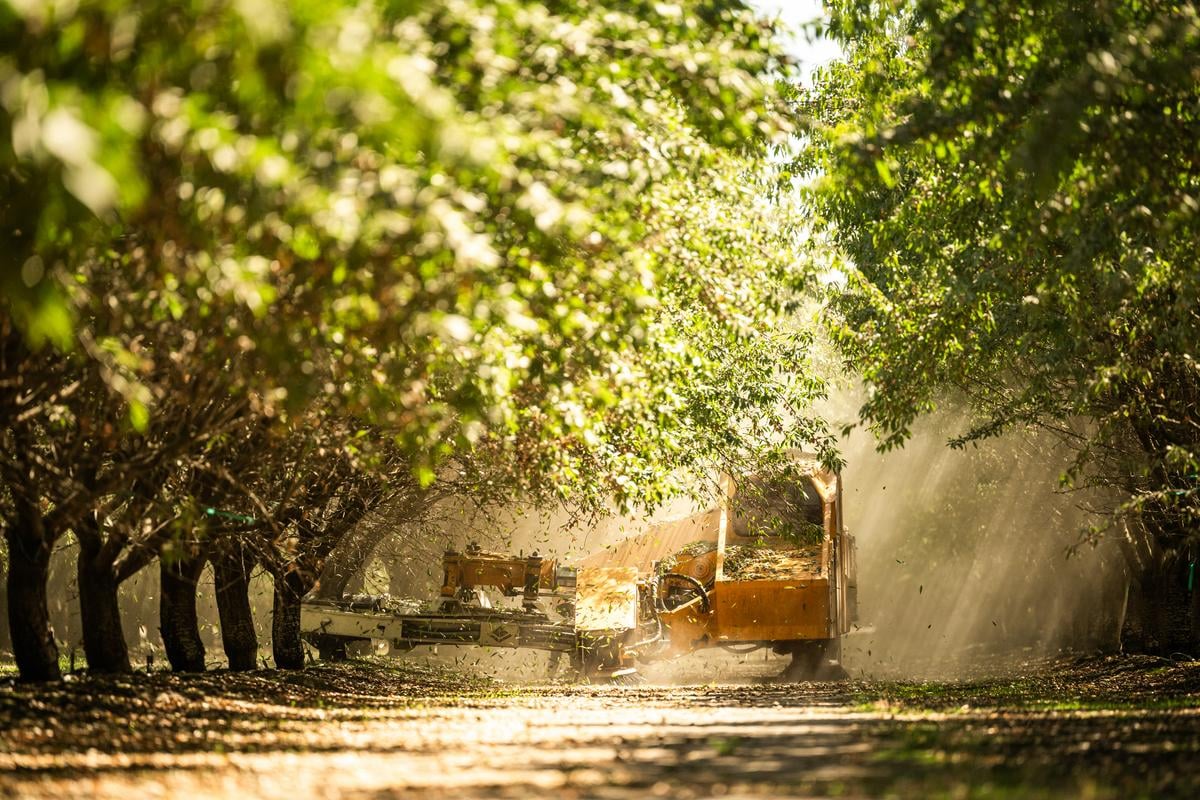
Once dry, the almonds are swept up by a machine and taken to a processing facility. There, sorting, hulling, and shelling take place. Some almonds are left with their thin, brown skin, while others are blanched to remove it, giving us the skinless variety commonly seen in stores. At this point, they’re ready for packaging or further processing into almond milk, butter, flour, or oil. Even the hulls go to use as dairy feed and bedding materials for livestock, growing medium for mushrooms, and woody material that improves the condition of soil.
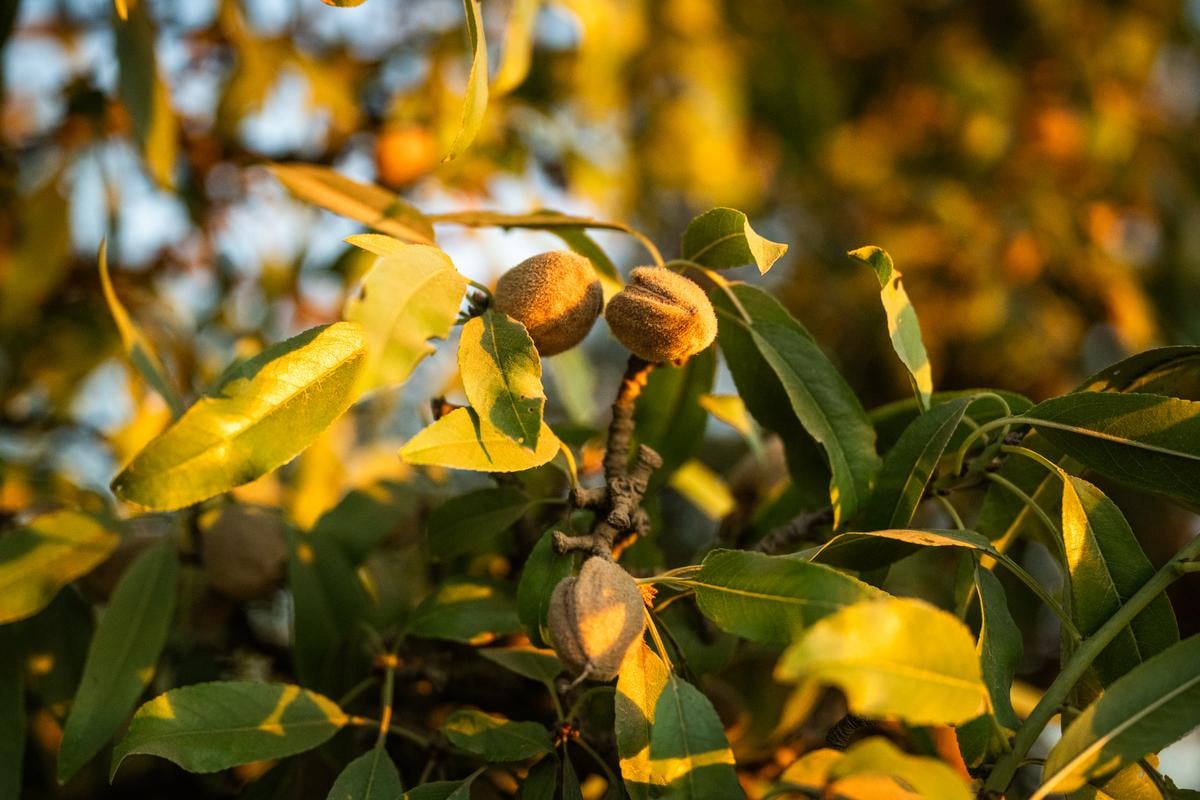
Can You Eat Almonds Straight from the Tree?
While it might seem tempting to snack on an almond straight from the orchard, raw almonds straight from the tree are not quite ready to eat. Fresh California almonds have a tough shell, and the seed inside can taste slightly bitter due to natural compounds like amygdalin. To ensure they’re safe and tasty, almonds are usually roasted or processed before they hit store shelves. However, raw almonds sold commercially are often steam-pasteurized to remove any potential contaminants.
Green Innovations: Sustainable Almond Farming
California almond farmers are pretty forward-thinking when it comes to sustainability. Here’s how they’re keeping things green:
- Smart Water Use: Farmers use advanced irrigation techniques like drip and micro-sprinklers to deliver water directly to the roots. This way, they use less water more efficiently.
- Healthy Soil: Cover crops and organic matter additions improve soil health, prevent erosion, and boost biodiversity.
- Pest Patrol: Almond farmers employ Integrated Pest Management (IPM) which uses beneficial insects and other biological controls to manage pests, reducing the need for chemical pesticides.
- Solar Power: Many farmers are installing solar panels to power their operations, cutting down on carbon footprints.
- Zero Waste: Contrary to the myth that only the almonds are useful, farmers make use of the entire crop. Hulls and shells go to use as livestock feed, bedding, and even biofuel. Organic waste is mulched and returned to the soil.
Busting Myths: Setting the Record Straight
There are a few misconceptions about almond farming that we need to clear up:
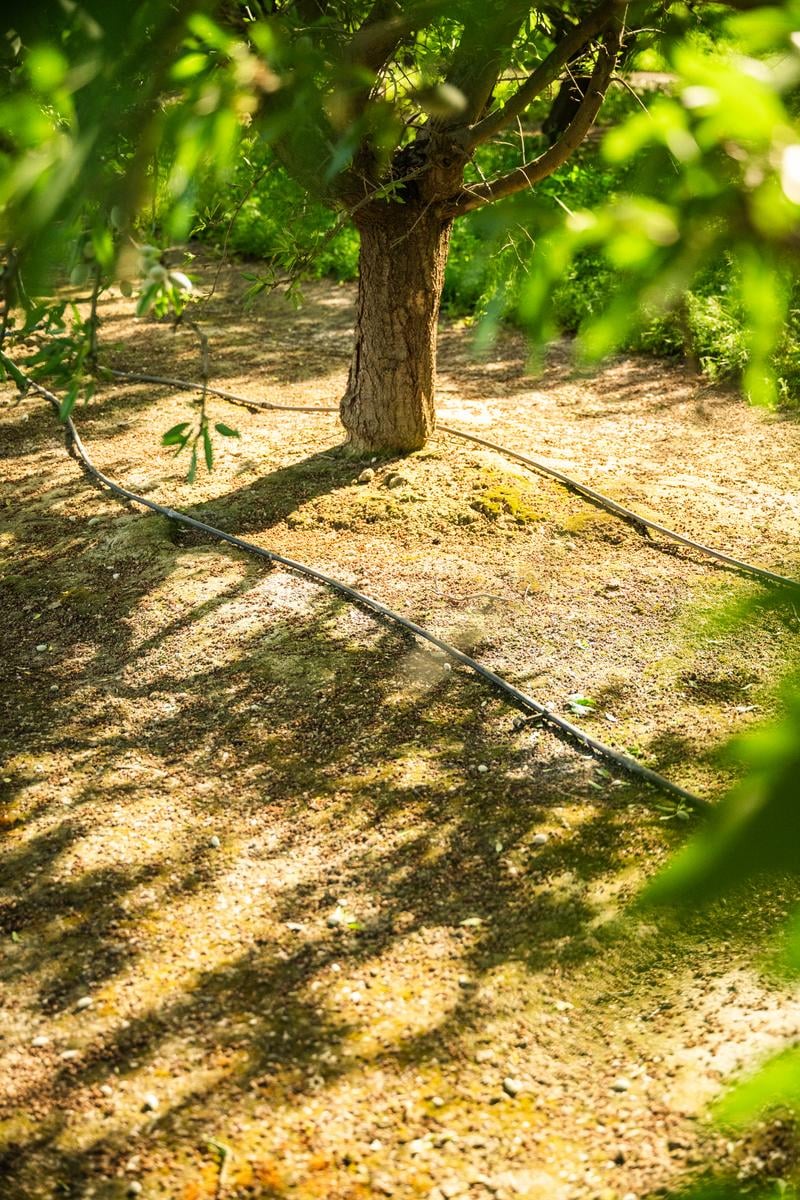
Water Guzzlers?: Almonds do need water, but farmers have made huge strides in reducing water usage. Modern irrigation practices have cut water use per pound of almonds by 33% in the last 20 years.
Monoculture Myths: Almond orchards are often part of diversified farms. Farmers rotate crops, plant cover crops, and maintain hedgerows to support a healthy ecosystem.
Big Business Misconceptions: Most almond farms in California are family-owned and operated, not run by large corporations. These families have been growing almonds for generations, and are deeply committed to sustainable farming because it is their livelihood.
Not Just the Nut: As mentioned earlier, the entire almond crop is utilized. From livestock feed to biofuel, nothing goes to waste.
Why California Almonds Are So Special
California almonds stand out not just for their quality but also because of the state’s dedication to safe, sustainable farming practices. The almonds grown here are prized around the world for their flavor, size, and versatility, showing up in everything from granola bars to cosmetics. With California’s perfect growing conditions, experienced farmers, and deep focus on sustainability, it’s no wonder California is the leading global almond producer.

In a Nutshell: California Almonds
The path from almond flower to almond snack is a long, intricate process that highlights the Golden State’s agricultural expertise and dedication of its farming families. From relying on bees to carefully shaking trees for the harvest, almond farming requires skill, science, and dedication. The next time you grab a handful of almonds, take a moment to appreciate not just the delicious taste but also the hard work that brought them to your table. Whether you’re enjoying them roasted, sliced, or blended into milk, almonds are a true testament to California’s agricultural prowess.
Visit California’s Almond Orchards in Spring
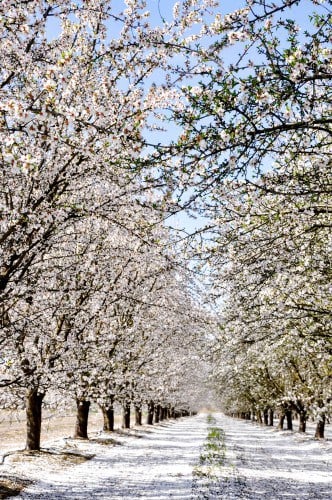
Each spring, Fresno County’s Blossom Trail transforms into a vibrant tapestry of pink and white blossoms, showcasing the region’s rich agricultural heritage. This 62-mile self-guided loop winds through picturesque country roads lined with blooming almond, plum, apple, apricot, nectarine, and citrus orchards. Typically peaking from mid-February to mid-March, the trail offers visitors a unique opportunity to experience the Central Valley’s natural beauty and the bounty of California’s fruit and nut production.
PLAN YOUR VISIT
Article written by Alison Needham @agirl_defloured. Photography by James Collier @jamescollier

